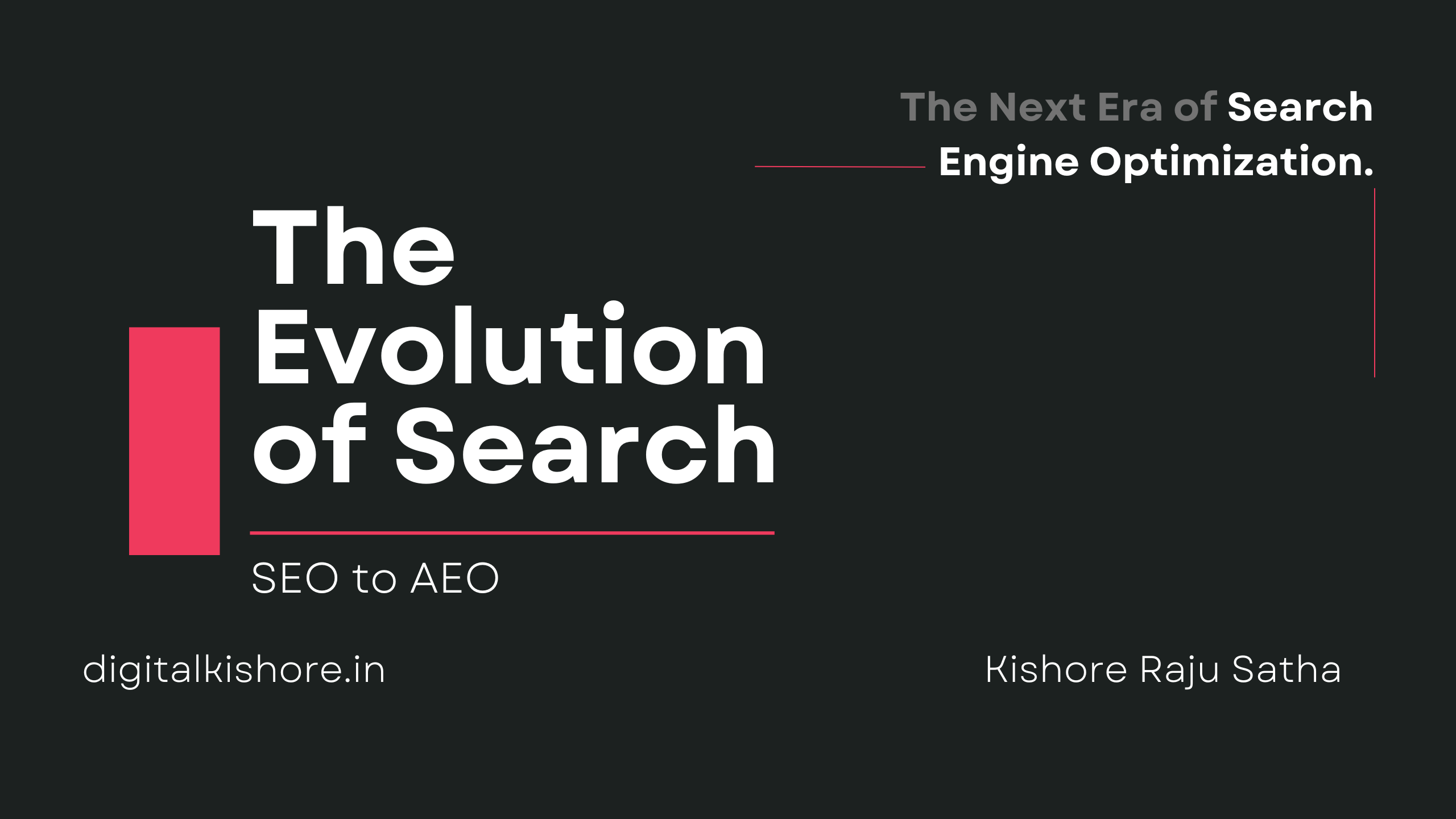6. Adapting to AEO (Answer Engine Optimization)
As search engines continue to evolve from traditional SEO to more answer-driven strategies, businesses must adapt by implementing AEO (Answer Engine Optimization). This approach focuses on structuring content and optimizing it in ways that make it easier for search engines, especially AI and voice assistants, to provide direct, relevant answers to user queries. Here are the practical steps businesses can take to optimize for AEO:
Practical Steps for Optimizing for AEO
1. Structured Data and Schema Markup
Structured data and schema markup are essential for making content more understandable to search engines, enabling them to provide more accurate and relevant answers. By adding schema markup to your website, you help search engines identify and categorize key information about your content. This can improve the chances of your content appearing in featured snippets, knowledge panels, and rich snippets.
- Schema Markup: This code added to a webpage helps search engines understand specific details about the content, such as events, products, services, recipes, and reviews. This extra layer of information makes it easier for search engines to extract the most relevant answer to a user’s query.
- Types of Structured Data:
- FAQ schema: Helps optimize for FAQ sections by enabling search engines to display questions and answers directly in search results.
- How-to schema: Ideal for tutorial or step-by-step guides, this schema helps search engines present the content in a rich format.
- Review schema: Makes it easier for search engines to display reviews and ratings alongside your content, boosting visibility.
By implementing schema markup, you make your content more accessible to search engines, improving your chances of appearing in answer boxes and voice search results.
2. Content Tailored for Featured Snippets
Featured snippets are one of the most prominent forms of direct answers shown by search engines. To optimize for featured snippets, businesses must focus on creating content that directly answers users’ questions in a concise and structured way.
- Answer questions clearly: Identify the questions your audience is likely to ask and provide clear, succinct answers at the beginning of your content. For example, if you’re writing a blog post about “How to tie a tie,” start by providing the direct answer or step-by-step instructions in the first few sentences.
- Use bullet points or numbered lists: These formats are easy for search engines to recognize and pull as featured snippets. Bullet points and numbered lists make it easier to break down complex information into digestible, answer-focused chunks.
- Create a Q&A section: Including a Q&A or FAQ section at the end of your content, where you address specific questions, can increase your chances of being selected for a featured snippet.
3. Natural Language and Conversational Content
To optimize for AEO, content must be written in a conversational tone that aligns with how people naturally speak. Since voice search and conversational AI use everyday language, creating content that matches this style increases the chances of it being selected for voice search responses and other direct-answer features.
- Write in natural language: Use simple, straightforward sentences that directly address the user’s query. Avoid overly technical jargon or complicated language that might confuse voice assistants or search engines.
- Long-tail and question-based keywords: Optimize for longer, more conversational search queries. Instead of focusing solely on short keywords like “best pizza,” think about the full, spoken questions users might ask, such as “What’s the best pizza place near me?”
- Engage in dialogue: When writing, anticipate potential follow-up questions. This will help you structure your content in a way that answers multiple related queries. Voice search users often ask one question and expect the assistant to continue the conversation by providing further relevant information.
4. FAQs and Voice Query Optimization
Frequently Asked Questions (FAQs) sections are critical for AEO. Optimizing FAQ pages with conversational answers and incorporating natural language can significantly improve visibility in voice search results.
- Optimize for voice queries: Voice search often involves more question-based queries like “How do I make a chocolate cake?” or “What’s the best way to learn digital marketing?” Ensure your FAQ section answers questions clearly, and use conversational language to reflect how people typically speak when using voice search.
- Local and context-driven FAQs: Many voice searches are localized (e.g., “Where is the nearest gas station?”), so be sure to tailor your FAQs to address location-specific queries if applicable to your business.
- Optimize for snippets: Structure FAQs so they can be easily extracted for featured snippets. Keep answers concise, typically around 40-50 words, and place them at the top of your content to increase your chances of appearing in search results.
5. Case Studies of Businesses That Successfully Transitioned to AEO Strategies
Adopting AEO strategies can dramatically enhance visibility and improve search rankings. Here are a few real-world examples of businesses that successfully transitioned to AEO:
- The Home Depot: This home improvement retailer optimized its website for AEO by implementing schema markup and focusing on how-to content. By doing so, they increased the chances of their pages appearing in Google’s featured snippets for various DIY projects, driving more organic traffic and improving user engagement.
- Moz: A leader in the digital marketing industry, Moz optimized their blog content for featured snippets and voice search by restructuring posts and using clear, direct language in their FAQ section. As a result, they saw an increase in both organic traffic and visibility for voice queries related to SEO and digital marketing.
- Yelp: Yelp adopted a strategy that focused on optimizing local businesses for voice search. By incorporating location-specific queries into their FAQ section and ensuring their listings had structured data, Yelp significantly increased their visibility in voice searches like “Best restaurants near me” and “Top-rated pizza places.”
- Merriam-Webster: The dictionary company successfully adapted to AEO by focusing on long-tail queries and optimizing content for voice search. They regularly update their website with content that answers common word-related questions and has seen a rise in search visibility for voice queries related to definitions.
These case studies show that businesses in various industries can benefit from adopting AEO strategies. By focusing on clear, conversational content, implementing structured data, and optimizing for voice search, companies can increase their chances of appearing in direct-answer results, ultimately driving more traffic and improving user engagement.
By following these steps, businesses can transition smoothly into the world of Answer Engine Optimization. With the growing prominence of AI and voice search, adapting to AEO strategies is essential for staying ahead of the competition and ensuring that your content gets noticed in the evolving search landscape.


